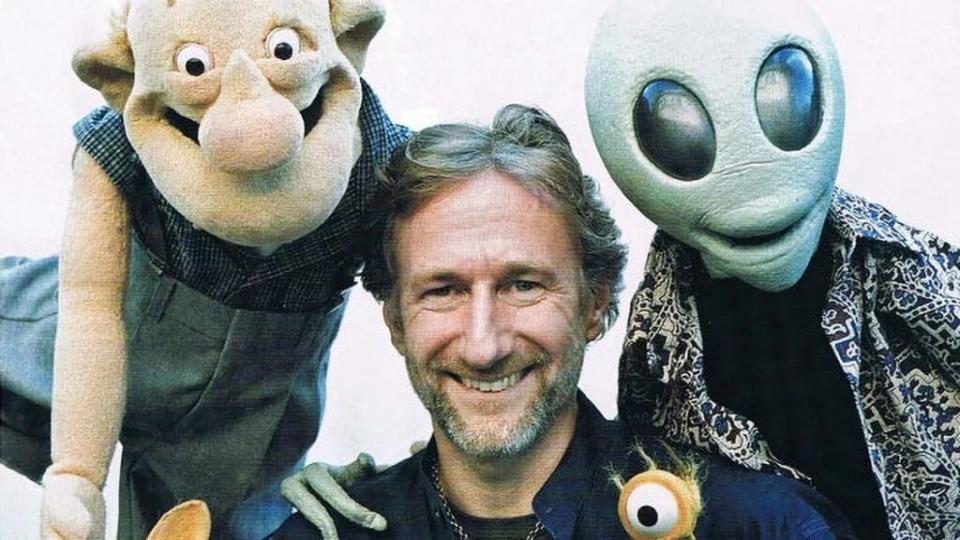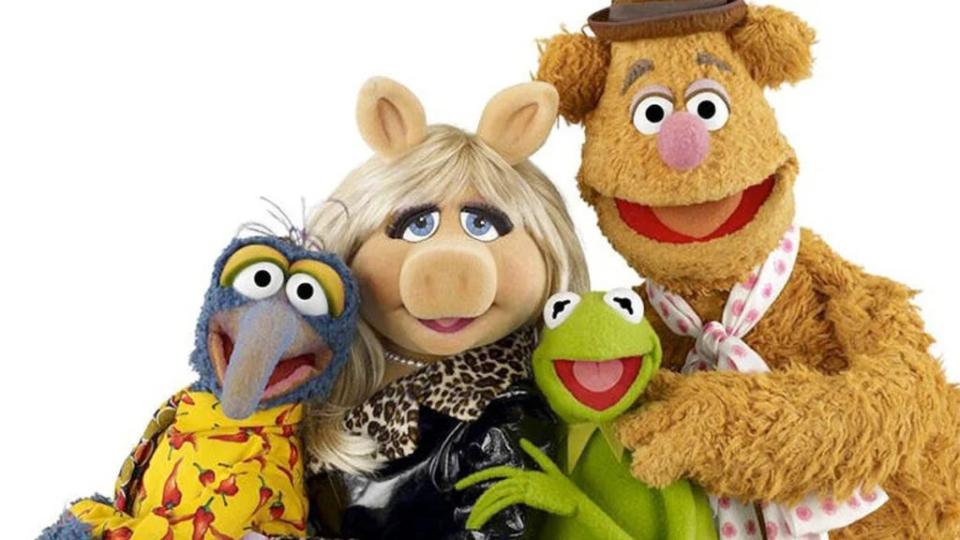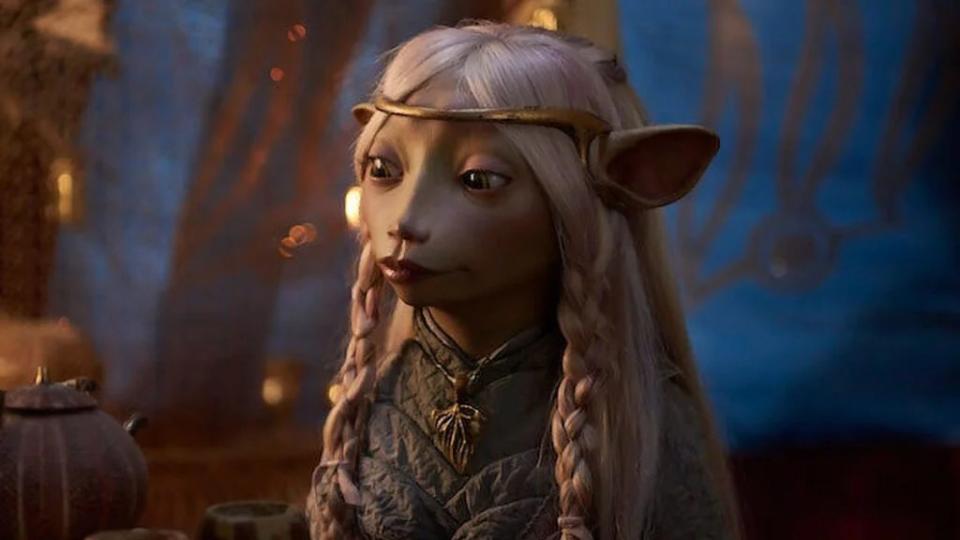How ‘The Dark Crystal’ and ‘Labyrinth’ Became the Crown Jewels of the Jim Henson Company
- Oops!Something went wrong.Please try again later.
- Oops!Something went wrong.Please try again later.
- Oops!Something went wrong.Please try again later.
- Oops!Something went wrong.Please try again later.
- Oops!Something went wrong.Please try again later.
- Oops!Something went wrong.Please try again later.
In the 1980s, Jim Henson released the fantasy epics “The Dark Crystal” and “Labyrinth” to poor reviews and anemic box office results. For the famed puppeteer, the films were a departure from the beloved Kermit the Frog and Miss Piggy characters that had made “The Muppet Show” his most enduring legacy. They were brooding and wildly expansive fantasy epics, and audiences at the time largely rejected both films.
But what a difference a couple of decades makes.
Despite selling off all of the Muppets rights to Disney in 2004 for $75 million, the Jim Henson Company retained the underperforming movies — for good reason. Fueled largely by a second life on home video, four decades later “The Dark Crystal” and “Labyrinth” — once dismissed and now widely acclaimed — have become the “crown jewel” of the Jim Henson Company, his children told TheWrap, responsible for inspiring books, a $100 million Netflix prequel series to “The Dark Crystal” and a “Labyrinth” sequel now in development with Sony.
“We’re so happy that ‘Dark Crystal’ and ‘Labyrinth’ now have the unqualified love of the audience that they didn’t have the first time around,” said Lisa Henson, CEO of the Jim Henson Company and the eldest daughter of Henson, who died in 1990. “It’s nice to have such enduring love for these movies,” she said. And with recent digital re-releases and robust Blu-rays on the way from Shout! Studios, “we’re excited because we always want to have more generations, new viewers, families.”
The two fantasy films have propped up the Jim Henson Company and set it on a starkly different path for Henson’s children Lisa and Brian, the latter of whom is the company’s chairman. And as they related to TheWrap, the films’ long-lived resurgence ironically would never have been possible had Henson successfully sold his entire company to Disney in 1989 as he intended.
“In general, a small company is going to be a better caretaker for a classic property than a big entertainment corporation,” Brian Henson said. “Even Disney will put 90% of their energy behind five titles at any one time. ‘Labyrinth’ and ‘Dark Crystal’ wouldn’t be enjoying the huge popularity that they still do without our taking care of those properties over the years.”
Box office bombs
In 1982, Henson released “The Dark Crystal,” a brooding fantasy populated by otherworldly creatures designed by English illustrator Brian Froud. Made for $25 million, it eked out a profit after pulling in $41 million at the box office. But critics were befuddled. “It aims to be a sort of Muppet ‘Paradise Lost’ but winds up as watered down J.R.R. Tolkien,” hissed The New York Times’ Vincent Canby.
Four years later, Henson attempted to mine the same fantasy elements for “Labyrinth.” Unlike “The Dark Crystal,” it featured actual human performers —led by Jennifer Connelly and David Bowie — while maintaining similar sensibilities. The results were even more dire. “Labyrinth,” which was also made for around $25 million, grossed just $14 million. Critic Gene Siskel savaged the movie, saying Henson was “completely at sea when he tries to create more mature entertainment” than the Muppets. (The New York Times, on the other hand, referred to it as “a remarkable achievement.”)

“Labyrinth” remains deeply important to Brian Henson because he traveled to England as a young man to work on the production. He was the lead puppeteer and voice of Hoggle, a diminutive character who helps Connelly on her quest to rescue her baby brother from the Goblin King, played by Bowie. Henson was also in charge of training a small army of puppeteers for the movie. (The original trailer for the movie credits “David Bowie, Jennifer Connelly and numerous goblins and creatures.”)
“My father was very proud of it,” Henson said. “While he was making it, he really did feel like ‘Labyrinth’ was all of his career all pulled together.”
In some ways, Jim Henson was trying to tweak aspects of “The Dark Crystal” that hadn’t completely worked. For one, there would be humor. For another, there would be music – something that added a more “variety” feeling to the movie and would call back to his work on “The Muppet Show,” “Sesame Street” and even “Fraggle Rock.” He also incorporated the idea of a human “guest star” – Bowie — in a role that Brian says Sting and Michael Jackson were also up for.
Brian Henson recalled the somewhat chaotic pre-production period for “Labyrinth,” with creatures being designed and built while the script remained elusive. Monty Python member Terry Jones provided an initial draft that was subsequently worked on by Laura Phillips, Elaine May, George Lucas (who was producing the movie) and Jim Henson himself. (An archived post on the Henson website noted that more than 25 treatments and scripts were drafted and revised between 1983 and 1985.)
As “captain,” Brian Henson’s job was to “make sure we would be able to do everything that my dad wanted all of these characters to be able to do.” But he was aware of the script’s complications. “And that’s tough for my dad because he really liked the performance element. The writing preparation side of it was frustrating to him.”
The entire team was surprised when “Labyrinth” failed. Brian recalled that reviewers in the U.K. claimed the movie documented child abuse, saying the production had been “putting a baby in clearly dangerous situations and you’re doing it for a laugh.” This, of course, was untrue, with the baby gags inspired by Jim Henson’s love of Maurice Sendak, the author and children’s book illustrator. (Later, the Henson Company would provide the characters for Spike Jonze’s Sendak adaptation “Where the Wild Things Are.”)
“There was all of a sudden a big movement that the movie was twisted and promoted child abuse,” Brian Henson said. A cagey Tri-Star Pictures pulled it from theaters quickly. “It just didn’t give it give it a chance with the audience, really,” Henson said.
Disney courtships and Muppet sales

In 1989, Disney, then led by CEO Michael Eisner, who had worked with Jim Henson years earlier at ABC, began a courtship with Henson Associates, Henson’s company at the time. Disney made a reported $150 million offer for the entire company – including “The Dark Crystal” and “Labyrinth.” The deal ultimately didn’t happen; Jim died of pneumonia a year later at age 53.
Eisner finally forged an agreement in 2004 to buy Henson copyrights and related IP for $75 million — but just for the Muppet characters.
Brian Henson is thankful Henson didn’t do the original deal with Disney in 1989.
“I knew keeping the fantasy properties back was going to be the crown jewel to the Henson Company continuing,” he said. “Unfortunately, my dad when he died had no idea that ‘Labyrinth’ was going to become so successful. I think he knew ‘Dark Crystal’ would enjoy continued success,” Henson said.
The Hensons started realizing there was life in the titles when they both hit home video. “The Dark Crystal” first came out on VHS in 1983, a year after being in theaters, then again in 1988, with several more video releases starting in 1999.
“Labyrinth,” in particular, was redeemed by home video, first in 1987, and then through seven subsequent releases. “Now it almost is the representative movie of fantasies of the 1980s,” Henson said.
Sequels, prequels and merchandise
About two decades after their original theatrical releases, the gears started to turn on both movies.
In 2006, Henson hired Genndy Tartakovsky to work on an animated sequel to “The Dark Crystal,” based in part on a storyline that Jim Henson had worked on with original writer David Odell (who had also worked on “The Muppet Show”). It didn’t get produced but later became the basis for a graphic novel.
The Hensons made further attempts to do a sequel film, including with Australian filmmakers The Spierig Brothers, before it was reconfigured as a prequel series for Netflix. The 10-episode Netflix show, “The Dark Crystal: Age of Resistance,” was released in 2019 to critical acclaim. It pushed a new approach that integrated digital technology with classical puppeteering. But it didn’t capture the audience Netflix wanted and the streamer canceled it after a single season.
Still, it kept “The Dark Crystal” alive, and did so in a way that didn’t tarnish the brand.
“We have a pretty small library. We’re not the Walt Disney Company where they can go into just a random vault and find 100 new things,” Lisa Henson said of the Jim Henson Company’s library of a few dozen titles spread across children’s entertainment and adult sci-fi and fantasy. “When it comes to doing something with our legacy properties, we don’t want anything less than a perfect product.”

That quest for perfection has held up a “Labyrinth” sequel despite Sony (now the owner of original distributor Tri-Star) desperately wanting to make one, Lisa Henson said. Over the years filmmakers from “Doctor Strange” director Scott Derrickson to “Don’t Breathe” director Fede Álvarez have been attached.
“We’ve had a couple of scripts written and we’re going to start over again,” Lisa said. “We’re going to start with a new script and a new director. I just don’t even want to ever talk about dates or when it could be because I don’t want to get anybody excited.”
Also, Lisa confirmed that there is more “Dark Crystal” on the horizon, although she didn’t give any specific details.
Besides the home video releases, like the ones Shout! is currently mounting, Henson has exploited the titles to produce a voluminous selection of merchandise — from plush toys to a treasure trove of print materials, including children’s books, behind-the-scenes books, novels that gamely extend both universes and “bestiaries” that forensically document the creatures of both “The Dark Crystal” and “Labyrinth.” Fans can buy a 2025 “Labyrinth” wall calendar right now for $16.99.
In the music realm, “Magic Dance,” a song from “Labyrinth,” has over 31 million streams on Spotify.
The later success of “The Dark Crystal” and “Labyrinth” has underlined for Brian Henson the importance of the “dark fantasy” side of the company. He was heavily involved in “The Storyteller,” one of the last projects his father oversaw before his death. The 1987 television series featured John Hurt as a wizened storyteller behind the show’s fantasy tales, while Brian played the Storyteller’s grumpy dog.
Shout! has confirmed that the studio also has the rights to “The Storyteller” and its sequel “Greek Myths” and that plans are afoot for deluxe home video reissues along the lines of what Shout! has done with “The Dark Crystal” and “Labyrinth.”
Beyond riding the IP from the two fantasy films, Brian Henson said The Jim Henson Company is working on a potential indie film project “along the lines” of “The Storyteller.”
“I’m really looking forward to being able to do science fiction and fantasy again, where you don’t have a market saying, ‘Well, if you don’t spend $200 million, nobody’s going to give you any attention,’” he said.
The post How ‘The Dark Crystal’ and ‘Labyrinth’ Became the Crown Jewels of the Jim Henson Company appeared first on TheWrap.

